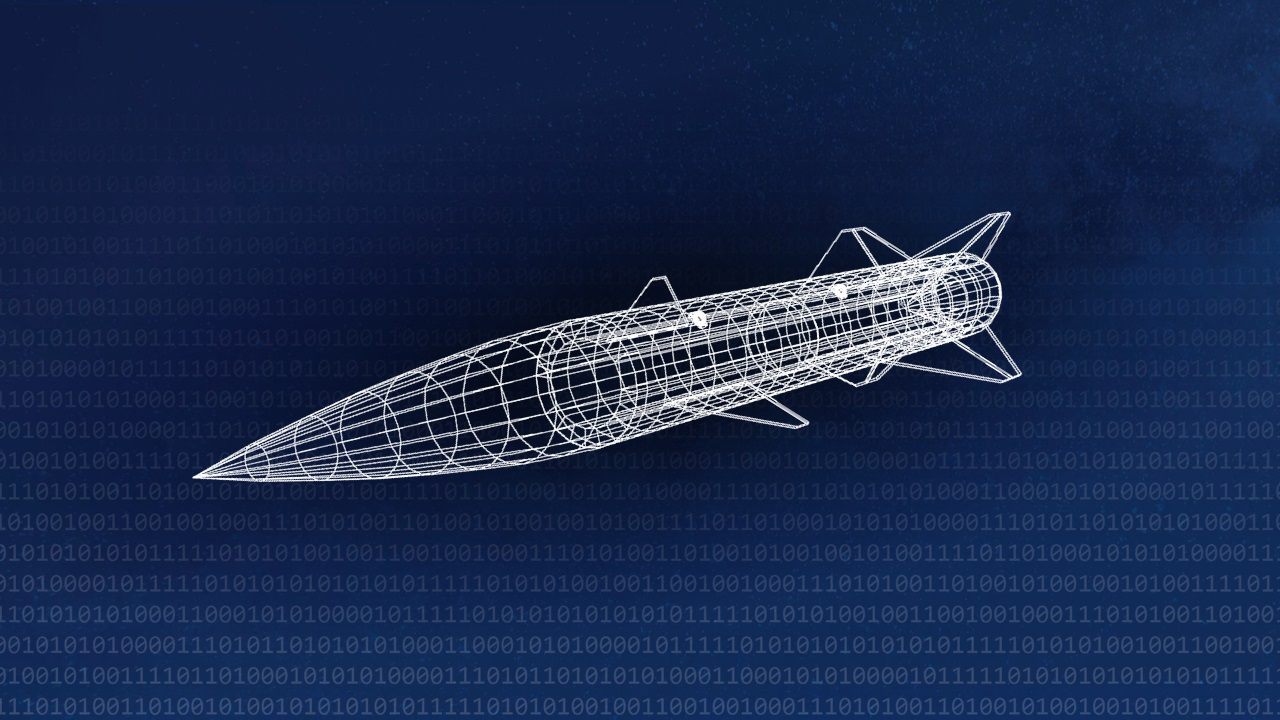
A “digital twin” of AFRL’s Gray Wolf prototype cruise missile.
WASHINGTON: The Air Force Research Laboratory’s WeaponONE effort to develop “digital twin” technology will put “actual hardware in the loop” and test how feedback from a real-world weapon can be used by its virtual doppelganger to rapidly fix problems and/or upgrade capabilities, says AFRL’s program manager James Sumpter.
Digital twins are virtual representations of something in the real world, like a weapon system, that can be linked via software to their physical counterparts. They are one of the tools used in modern “digital engineering.” The WeaponONE program “aims to develop and transition a set of tools/practices to enable the digital transformation” of any weapon in the future, Sumpter explained in an email.
WeaponONE also is serving as a pathfinder program for Air Force Materiel Command’s Digital Campaign. The AFMC campaign is aimed at integrating digital tools into all of its functions, “from acquisition to sustainment and beyond, not just engineering,” according to the AFMC website. The campaign kicked off with a Virtual Industry Day on Sept. 21, headlined by then-Air Force acquisition czar, Will Roper.
As Breaking D readers know, Roper was a huge proponent of digital design, digital engineering, and digital manufacturing. In September, he released a wide-ranging strategy for “digital acquisition,” arguing the Air Force needs to invest heavily in these technologies to outpace peer competitors Russia and China in the development of next-generation capabilities.
As a baseline for WeaponONE development, AFRL is using its Gray Wolf project to develop a prototype low-cost cruise missile that could be deployed in swarms to counter enemy air defenses. Gray Wolf was tested for the first time by the 416th Flight Test Squadron out at Edwards AFB in July.
Sumpter explained that Gray Wolf was chosen as the baseline for a number of reasons, not the least of which that both are currently in AFRL’s portfolio, so there wasn’t any cross-organization coordination needed.
Further, Gray Wolf “is a recent build with modern hardware/software interfaces” using an open system architecture, “which means it fits smoothly into the Digital Twin framework,” he said, and “all of our design documents are readily available.” In addition, flight testing data from Gray Wolf is at hand to help flesh out its WeaponONE digital twin.
The first test of the WeaponONE digital twin prototype in virtual space was announced by AFRL Jan. 21. “This demonstration is just the first of many that will come as we move the weapons enterprise into an era of digital engineering, accelerating weapons development and improvement at the speed of relevance,” said Craig M. Ewing, senior scientist for AFRL’s weapons modeling and simulation directorate.
Sumpter wouldn’t be drawn on the budget or schedule for the WeaponONE program, only noting that it is “a multi-year effort.”






















